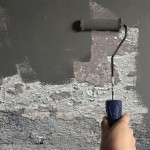Basement Bathroom Plumbing With Ejector Pump
Installing a bathroom in your basement can be a great way to add value and convenience to your home. However, if your basement is below the level of your sewer line, you will need to install an ejector pump to remove wastewater from the toilet, sink, and shower.
Ejector pumps are relatively simple devices, but they can be expensive to install and maintain. It is important to understand how they work and what to look for when choosing one.
How Do Ejector Pumps Work?
Ejector pumps work by using a jet of water to create a vacuum that sucks wastewater up from the basement and into the sewer line. The pump is connected to a water supply line and a discharge line. When the water level in the sump basin reaches a certain level, the pump turns on and discharges the wastewater into the discharge line.
What to Look for When Choosing an Ejector Pump
When choosing an ejector pump, you need to consider the following factors:
- The size of the sump basin: The sump basin is where the wastewater is collected before it is pumped out. The size of the sump basin will determine the size of the pump you need.
- The height of the discharge line: The discharge line is the pipe that carries the wastewater from the pump to the sewer line. The height of the discharge line will determine the pressure that the pump needs to generate.
- The flow rate: The flow rate is the amount of water that the pump can move per minute. The flow rate will determine how quickly the wastewater can be removed from the basement.
Installing an Ejector Pump
Installing an ejector pump is a job that is best left to a professional plumber. However, if you are confident in your plumbing skills, you can follow these steps:
1.Choose a location for the sump basin. The sump basin should be located in a low spot in the basement, such as near the floor drain.
2.Dig a hole for the sump basin. The hole should be large enough to accommodate the sump basin and the pump.
3.Place the sump basin in the hole and connect the discharge line to the sewer line.
4.Install the pump in the sump basin and connect the water supply line to the pump.
5.Test the pump by pouring water into the sump basin. The pump should turn on and discharge the water into the sewer line.
Maintaining an Ejector Pump
Ejector pumps require regular maintenance to ensure that they are working properly. Here are some tips for maintaining your ejector pump:
- Check the sump basin regularly for debris. Debris can clog the pump and prevent it from working properly.
- Test the pump monthly by pouring water into the sump basin. The pump should turn on and discharge the water into the sewer line.
- Have the pump serviced by a professional plumber every year. The plumber will clean the pump, check the bearings, and replace any worn parts.
By following these tips, you can help ensure that your ejector pump is working properly and that your basement bathroom is functioning properly.

Basement Plumbing For Ejector Pump Up To Main Sewage Line Terry Love Advice Remodel Diy Pro Pumps

Everbilt 1 2 Hp Upflush System Sewage Ejector Pump Kit Sw07501tc The Home

Basement Bathroom Plumbing Planning For A Below Grade Lavatory

Sewage Pump For Basement Bathroom

Image Result For How To Pump Sewage A Septic Tank Basement Bathroom Design Shower Remodel Tub

Why You Have A Mini Septic Tank In Your Basement Gold Key Home Inspections

Macerating Toilets Upflush Sewage Systems For Basements

Basement Bathroom Plumbing Planning For A Below Grade Lavatory

Basement Bathroom Vent And Drain Questions Doityourself Com Community Forums

Sewage Ejector Pump Maintenance Bieg Plumbing
Related Posts







